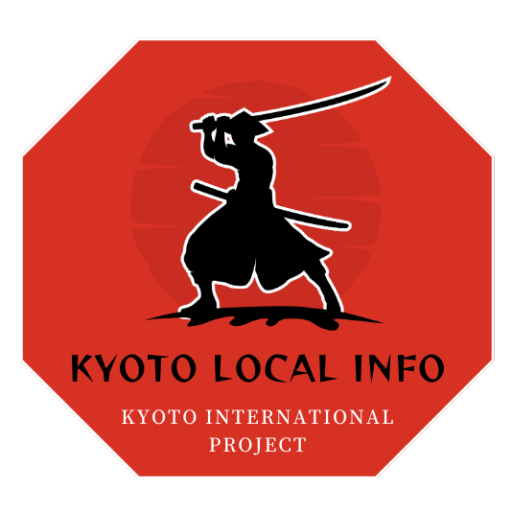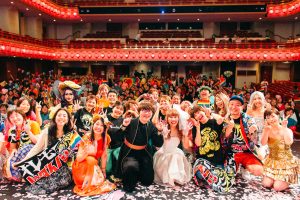Here are four locations associated with Yoshida Toshimaro and the "Ikedaya Incident," which brought fame to the Shinsengumi and delayed the Meiji Restoration.
During the late Edo period, the Shinsengumi attacked the Ikedaya Inn in Sanjo, Kyoto, where radical supporters of the Sonnō jōi movement had gathered, in an event known as the "Ikedaya Incident". It is said that this incident caused a delay in the Meiji Restoration by several years and elevated the Shinsengumi to stardom, making it a significant event.
In the vicinity of Sanjo Kiya-cho in Nakagyo Ward, where the Ikedaya Inn was located, there are several spots related to Yoshida Toshimaro, who was a leader among the radical supporters, including the remains of the Ikedaya Inn.
What is the "Ikedaya Incident" that delayed the Meiji Restoration?
On June 5, 1864 (equivalent to mid-July in the modern calendar), the eve of the Gion Festival, a group of imperial loyalists, mainly from the Choshu, Tosa, and Satsuma domains, gathered at the Ikedaya inn in Sanjo Kiya-machi.
The assembled radicals set fire to the streets of Kyoto, confined Imperial Prince Kaninnomiya Asahiko, assassinated Hitotsubashi Yoshinobu (who later became the 15th shogun), and Matsudaira Yasuhisa (the lord of Aizu domain and the Kyoto Shugoshoku), and attempted to abduct Emperor Komei to Choshu, aiming to use these actions as a catalyst to overthrow the shogunate.
Prior to this, the Shinsengumi had captured Furutaka Shuntaro, who ran a charcoal business under the alias "Masuya Kiemon" on Shijo Street, and discovered the plot.
However, they were unaware of the exact location of the gathering of radicals. The Shinsengumi split into several groups to search, and Kondo Isami's unit discovered that the radicals were assembled at the Ikedaya inn.
Despite being vastly outnumbered by the approximately 30 radicals, Kondo's unit stormed the inn.
Although the Shinsengumi initially struggled due to the overwhelming odds, eventually, a unit led by Hijikata Toshizo arrived, and the battle ended in victory for the Shinsengumi.
In the skirmish, seven key members of the imperial loyalist faction, including Miyabe Teizo of Higo and Yoshida Toshimaro of Choshu, were killed, and 23 others were captured. This dealt a significant blow to the imperial loyalists, delaying the Meiji Restoration by several years.
However, the Shinsengumi's reputation soared for thwarting the planned arson attack on Kyoto. Nevertheless, there are theories suggesting that the conspiracy on the side of the radicals was fabricated by the Shinsengumi, and the truth remains unclear.
The Four Guardians of the Matsushita Murajuku - Yoshida Toshimaro
Yoshida Toshimaro, who lost his life in the Ikedaya Incident, was a prominent figure among the radicals who attended the meeting at Ikedaya, along with Miyabe Teizou. Born in Choshu (present-day Yamaguchi Prefecture), he studied at Yoshida Shoin's Shoka Sonjuku, where he became known as one of the "Three Outstanding Students of Shoin" along with Takasugi Shinsaku and Kusaka Genzui. Adding Inoue Kuhachi, they were also called the "Four Heavenly Kings of Shoin."
During the Ikedaya Incident, when the Shinsengumi stormed in, Toshimaro was said to have stepped out of the room and was outside Ikedaya. Upon his return, he found the Shinsengumi surrounding the area and, after a fierce struggle, was eventually killed.
Toshimaro, who was praised as a "talented individual," passed away at the young age of 23. Some speculate that had he lived until after the Meiji Restoration, he might have become a "prime minister," reflecting the high regard in which he was held.
Four Selections + 1 of Places Associated with Yoshida Toshimaro in Nakagyo Ward, Kyoto
Yoshida Toshimaro, who would have been one of the prominent figures from Choshu and likely led the Meiji Restoration government if he had lived longer. It's often said that "there are no 'ifs' in history," but had he lived longer, figures like Ito Hirobumi and Yamagata Aritomo might not have had their roles. There are several places associated with Yoshida Toshimaro in Nakagyo Ward.
Site of the Choshu Clan Residence
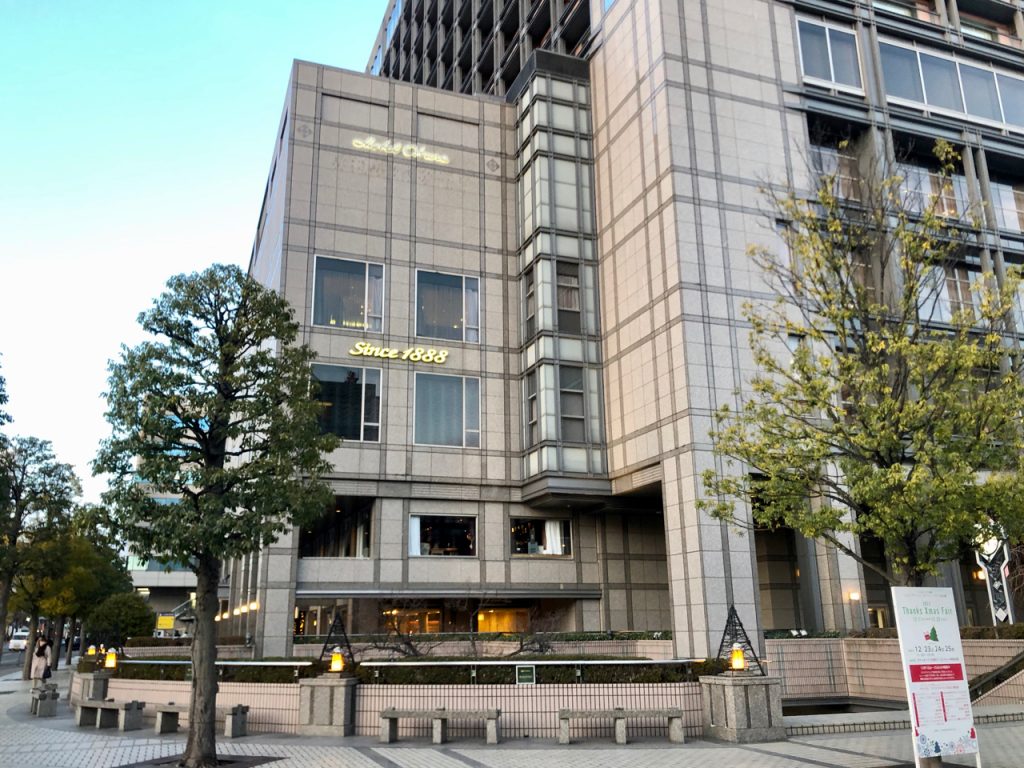
The site where the Kyoto Hotel Okura now stands was once the location of the Choshu Clan Residence until the Edo period.
It's located a few minutes' walk north of the Ikedaya. During the Ikedaya Incident, it's said that after escaping from the Ikedaya, Minomaro rushed to the Choshu Clan Residence to inform them, but the gate remained closed. There are also theories that he committed suicide in front of the gate or was killed on his way back to the Ikedaya from the Choshu Clan Residence.
Today, within the grounds of the Kyoto Hotel Okura, there is a monument with the inscription "Site of the Choshu Clan Residence" and a statue of Katsu Kokichi (Kido Takayoshi), a key figure of the Choshu clan.

Site of the Choshu Clan Residence
Ichinofunairicho, Nakagyo-ku, Kyoto City (in front of Kyoto Hotel Okura)
Site of the Ikedaya Incident

The Ikedaya was an inn located at Sanjo Kiyamachi in Kyoto. The Ikedaya Incident occurred when the Shinsengumi attacked the Choshu and Tosa supporters who were hiding at the Ikedaya.
Heading east from the Ikedaya, you'll find the Sanjo Bridge. On the west side of the Sanjo Bridge, on the second ornamental sphere, there remains a scar from the swords used during the Ikedaya Incident.

After the incident, the owner, Ikedaya Sohachi, who had been harboring the radicals, was arrested and died in prison. The Ikedaya resumed operations for a while after that, but it is no longer in business today. It is said that the original building remained until around 1960, but unfortunately, it was demolished. Now, on the site, there is an izakaya called "Kaisen Chaya Ikedaya Hana no Mai," themed around the Shinsengumi, and in front of the store, there is a monument and explanatory plaque marking the site of the Ikedaya Incident.
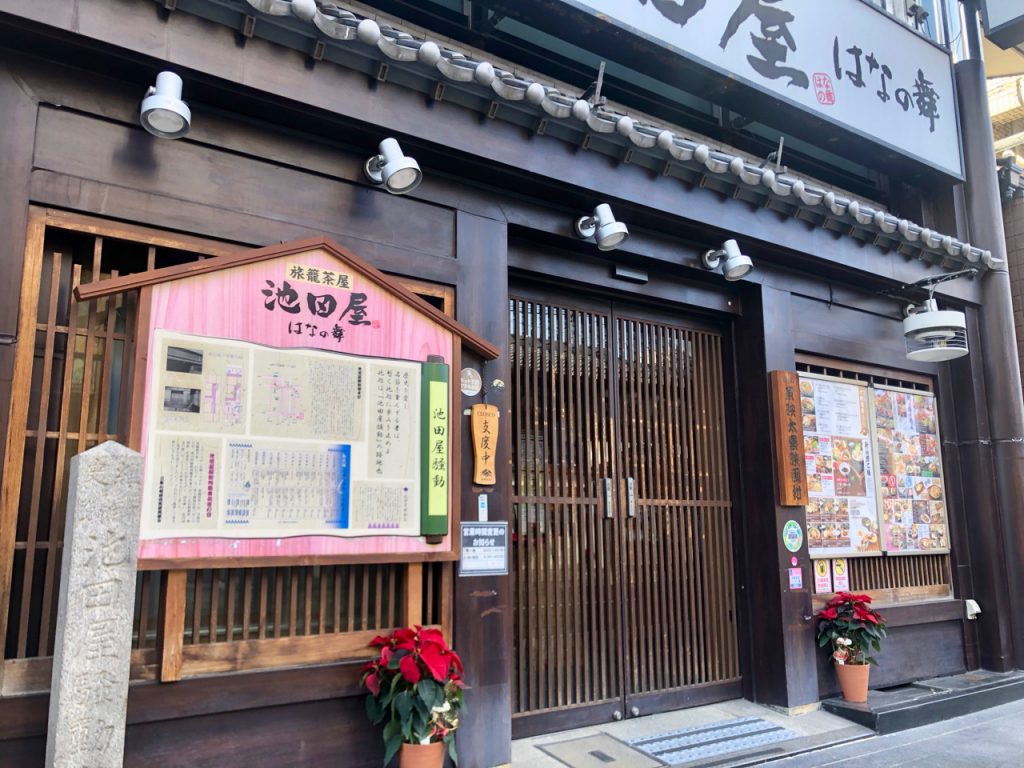
Ikedaya Incident Site
78 Nakajimacho, Nakagyo-ku, Kyoto City
The place of Yoshida Toshimaro's demise
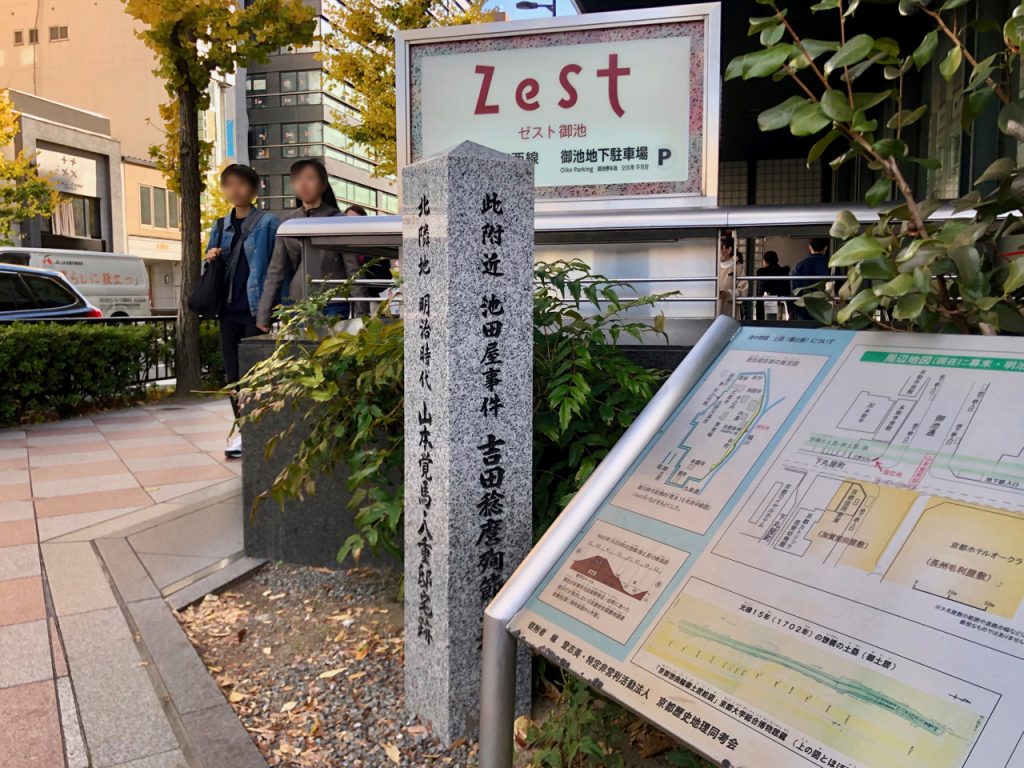
A monument with the inscription "Nearby: Site of the Ikedaya Incident, Yoshida Toshimaro's Martyrdom" stands at the southwest corner of Kawaramachi-Gojo. Positioned between the Ikedaya and the Choshu Clan's residence, this area is believed to be where Toshimaro met his end.
Interestingly, the other side of this monument bears the inscription "Site of the Residence of Yamamoto Kakuma and Yae." Kakuma Yamamoto was a cannon expert and Aizu clan warrior during the end of the Edo period. After the Meiji Restoration, he became involved in Kyoto Prefectural politics. Yae was his sister, who fought in the Boshin War and, after the Meiji era, married Arata Isojima, engaging in female education and the spread of Christianity. She is famous as the protagonist of the NHK Taiga Drama "Yae no Sakura."
It is said that Kakuma and Yae lived in this area at the beginning of the Meiji era. It's rare to find a spot with connections to both Choshu, representing the anti-shogunate faction, and Aizu, representing the shogunate, on opposite sides.
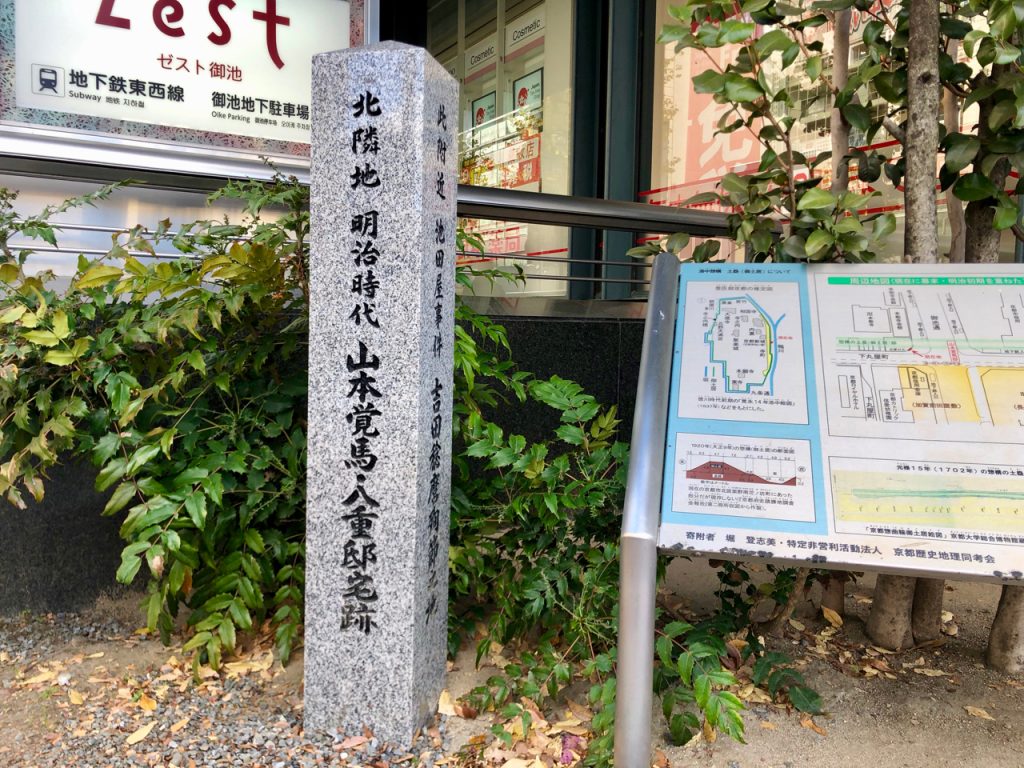
The place of Yoshida Toshimaro's demise
Southwest side of the Karasuma Oike intersection in Nakagyo Ward, Kyoto City.
Residence site of Genzui Kusaka and Toshimaro Yoshida.
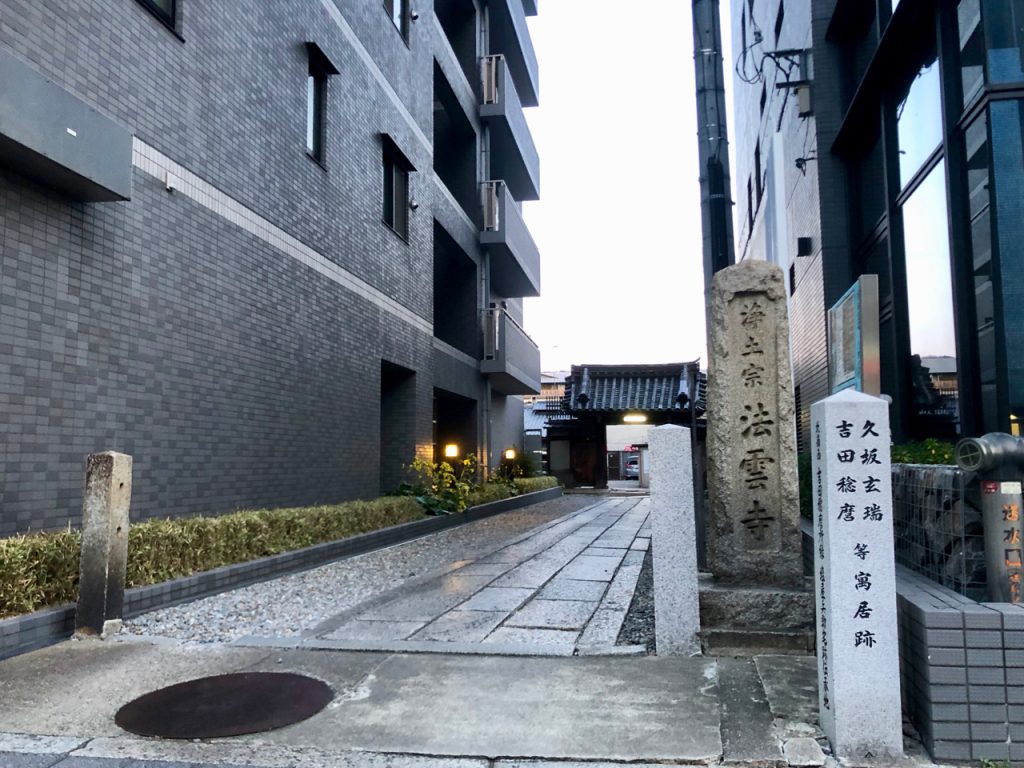
Near the entrance of Hounji Temple, north of the site of the Choshu clan's former residence, there is a monument erected for the former residences of Genzui Kusaka and Toshimaro Yoshida.
Kusaka and Toshimaro were involved in a plot to assassinate Nagai Narimasa, a prominent retainer of the opposing Choshu clan, which resulted in their confinement at Hounji Temple. The monument commemorates this event.
On another side of the monument, it reads "Here South, Site of the Demise of Mototsuki Kiyata, Involved in the Ikedaya Incident."
Mototsuki Kiyata was a Tosa domain samurai who studied navigation under Katsu Kaishu alongside Sakamoto Ryoma. He encountered the Ikedaya Incident and managed to escape, but he succumbed to exhaustion and committed suicide south of Hounji Temple.
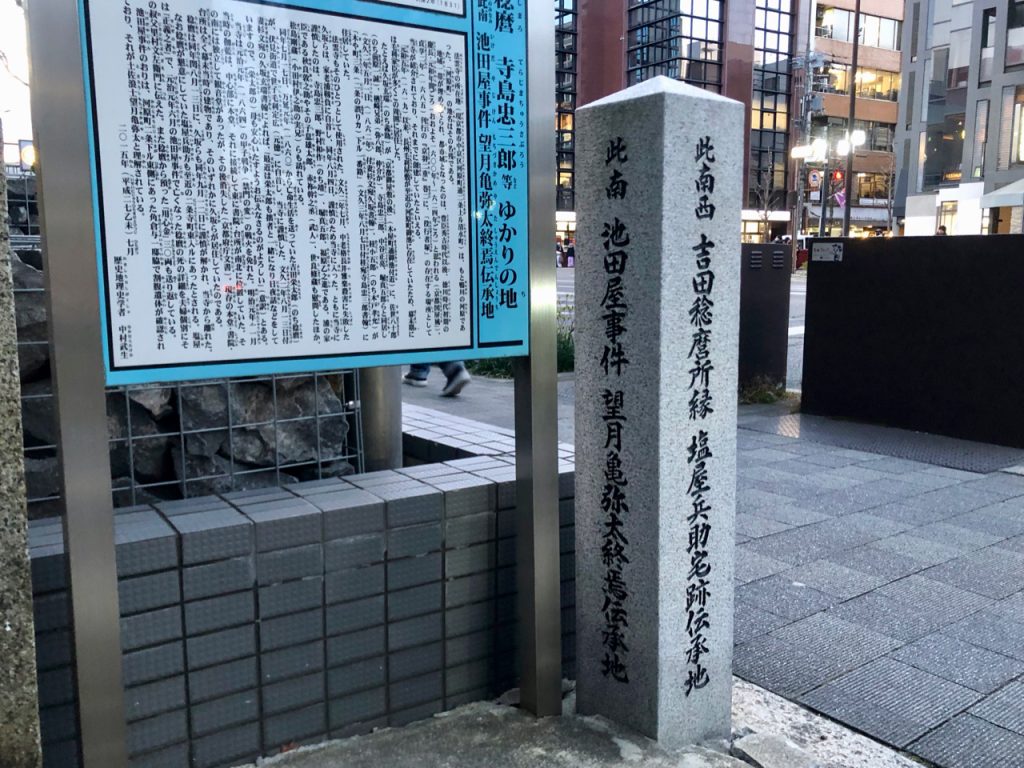
Residence site of Genzui Kusaka and Toshimaro Yoshida.
Shimizu-cho, Nakagyo-ku, Kyoto City, Kyoto Prefecture (in front of Hounji Temple)
On another side of the monument, it says, "To the southwest, the reputed site of the residence of Heisuke Shioya, associated with Yoshida Toshimaro." Shioya Heisuke's residence was the place where Toshimaro stayed regularly. I went to investigate various places rumored to be associated with him, but…
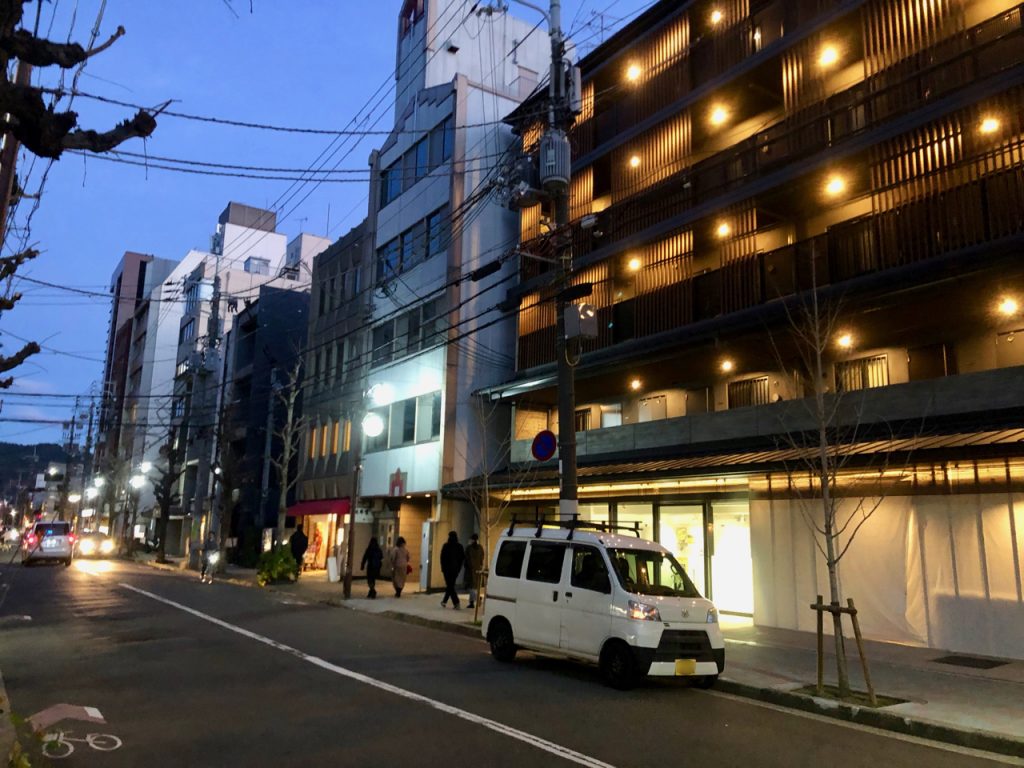
No traces at all.
It's probably supposed to be around here…
But there doesn't seem to be anything indicating the site.
I've introduced spots related to the Ikedaya Incident and Yoshida Toshimaro in Nakagyo Ward, which had an impact significant enough to delay the Meiji Restoration (though it's not clear if it actually did). If you visit the Ikedaya, the site of the Choshu Clan Residence, and the place where Yoshida Toshimaro met his end in sequence, you can feel the real-life dynamics and the spatial relationships on the day of the Ikedaya Incident. History buffs and enthusiasts of the Bakumatsu period should definitely check it out.
Author Profile
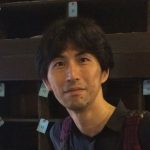
- 大阪で生まれ育ち、SEやDTPデザイナー・オペレーターを経て、京都の某情報誌でいつのまにか編集・ライターになってました。読書と酒と犬をこよなく愛し、面白そうなことに首を突っ込みます。
Latest entries
 article2024-01-17Here are four locations associated with Yoshida Toshimaro and the "Ikedaya Incident," which brought fame to the Shinsengumi and delayed the Meiji Restoration.
article2024-01-17Here are four locations associated with Yoshida Toshimaro and the "Ikedaya Incident," which brought fame to the Shinsengumi and delayed the Meiji Restoration. local news2023-12-15Kyoto and Nakagyo Ward History: "The August 18 Coup d'État ~ The Ikedaya Incident"
local news2023-12-15Kyoto and Nakagyo Ward History: "The August 18 Coup d'État ~ The Ikedaya Incident"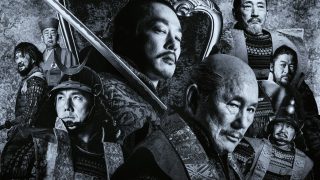 article2023-11-24"Kitano's World" depicts an unseen "Incident at Honnō-ji" Watching the movie "Kubi," we embark on a pilgrimage to Honnō-ji.
article2023-11-24"Kitano's World" depicts an unseen "Incident at Honnō-ji" Watching the movie "Kubi," we embark on a pilgrimage to Honnō-ji.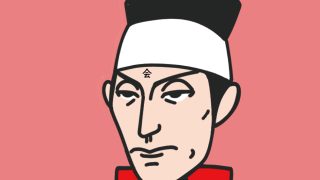 local2023-11-18The History of Kyoto and Nakagyo Ward: The End of the Edo Period Part 3 - "Birth of the Shinsengumi"
local2023-11-18The History of Kyoto and Nakagyo Ward: The End of the Edo Period Part 3 - "Birth of the Shinsengumi"
